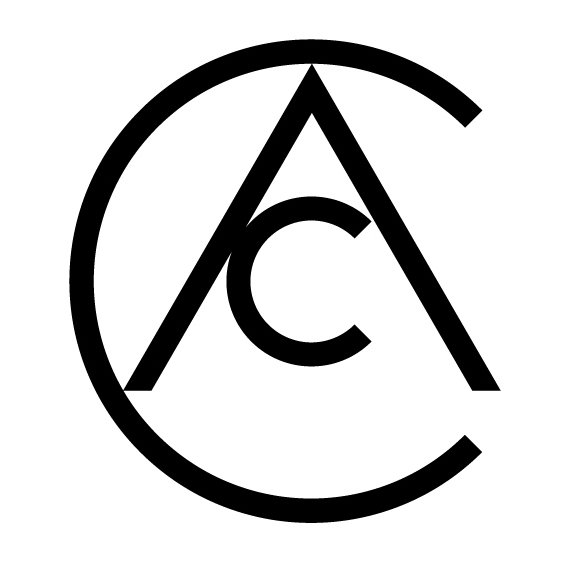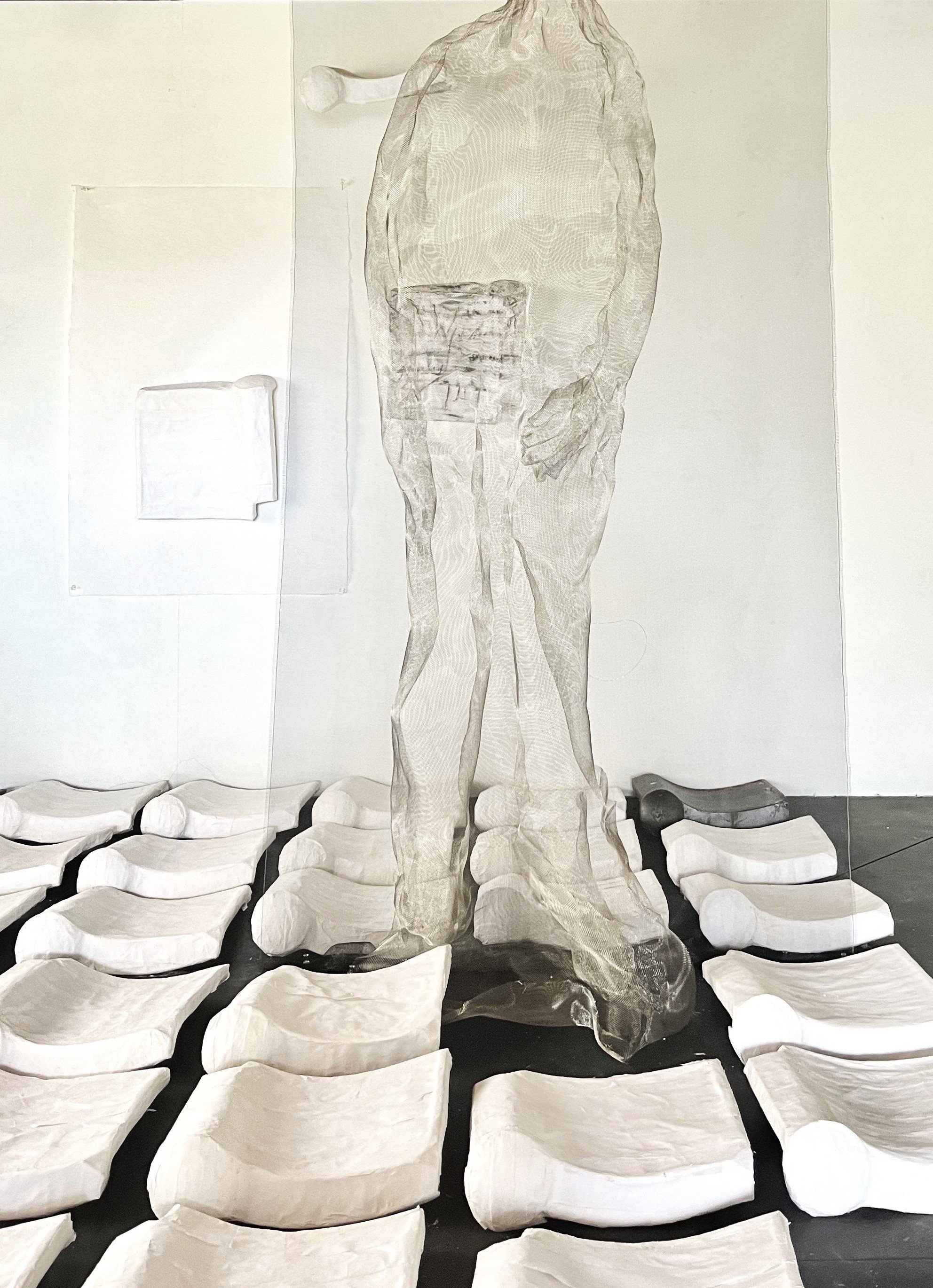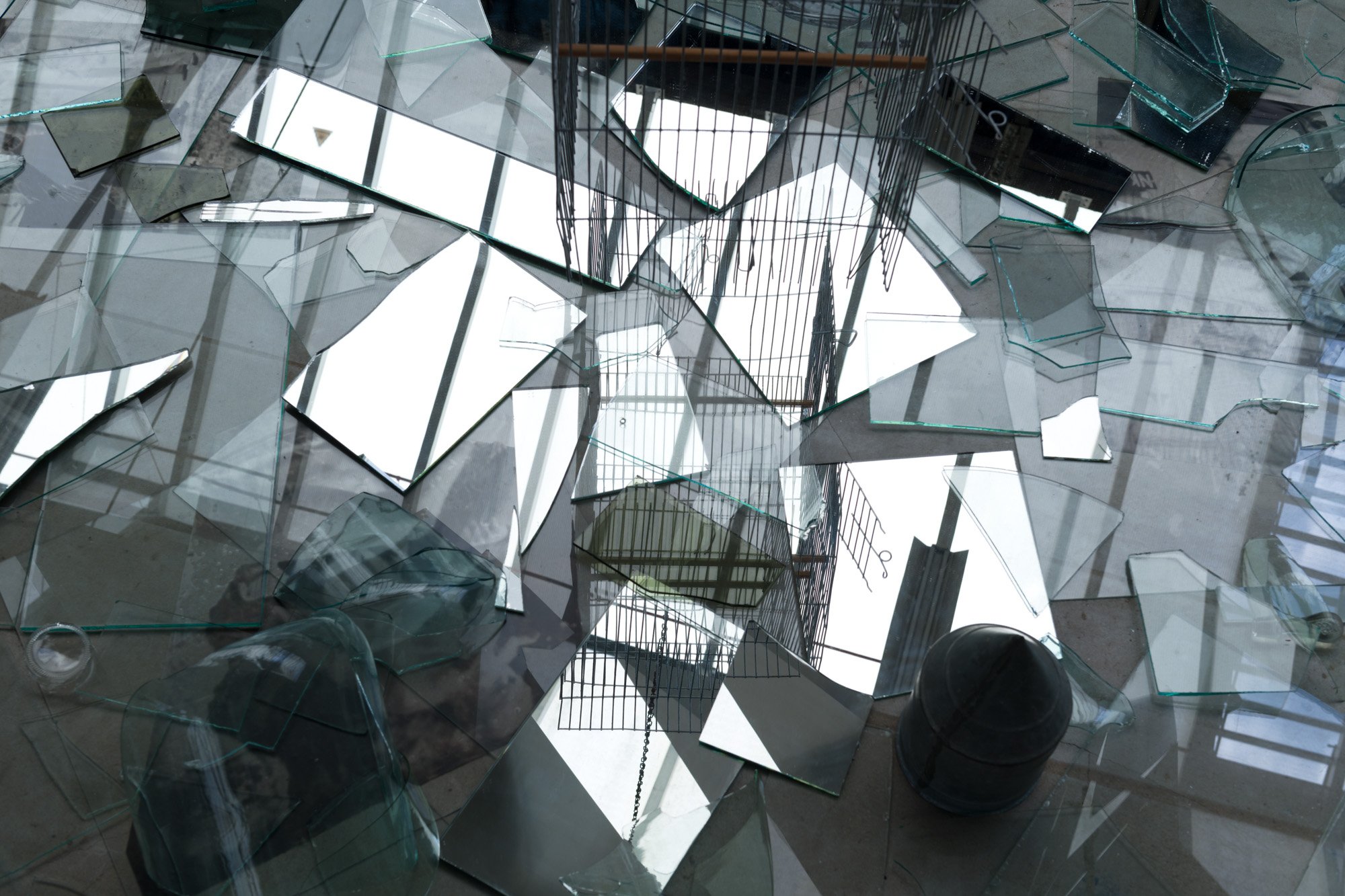Artist Spotlight - Caroline Kampfraath
Biography
Dutch artist Caroline Kampfraath crafts intricate 3D art that blends diverse materials to convey her insights on life, nature and society. Her work is characterized by the integration of unexpected objects like metal cans, bottles, and human forms, which serve as metaphors for our emotional and environmental experiences. Through her sculptures, she explores the ties between the physical and the symbolic, creating a layered dialogue about human existence.
Come Forward in Dense Waves(Detail) 2024 Japanese handcrafted paper and metal 30x30x20
The choice of materials in Caroline’s oeuvre is as eclectic as the symbols she employs. From natural resin to clay, flax to artificial resin, wool to lead, plaster to glass, and bronze to stone — her palette encompasses a diverse array. The seemingly incompatible nature of these materials captivates the viewer. Their contrasting properties create a visual tension that resonates in the overall ambiance of her work.
Come Forward in Dense Waves 70x60x20 2024 Japanese Handcrafted paper and metale paper
Ultimately Kampfraath’s art speaks to the idea of connection whether it is between humans and nature, individuals and society or our inner and outer worlds. Her pieces encourage a deeper reflection on these relationships, offering a nuanced explanation of human life, of change and of our evolving relationship with the world we inhabit. Through her sculptures and installations Kampfraath creates a bridge between the tangible and the intangible inviting a richer understanding of existence.
Come Forward in Dense Waves 2 installation 2024 Handcrafted Japanese paper metal, ceramics
Artist Statement
For me, making art is a way of understanding the world around me and connecting with it. Making sculptures or installations gives me the opportunity to reshape reality to get a better understanding. The themes are the daily life subjects that surround us. From big society-related issues like environmental issues (The Trees Weep Upon us, We’ll be Fossils by Then) to personal themes (Come Forward in Dense Waves).
Come Forward in Dense Waves 2 2024 installation Japanese Handcrafted paper and metal
Making art is a way to research them, colour them, understand them and share them. The materials I use are essential, materials like resin, bronze, stone, used objects, plaster, clay, marble and so on. I know which material I need from a very early stage.
Tears 45x45x30, 2024, Handcrafted Japanese paper, metal and dragonfly
Researching it is part of the process; it brings me closer to the emotion I want to explore because every material has its own possibilities as well as practical restrictions. A good example of this is the natural resin I use. The material is very beautiful in colour and smell but I have had to invent previously non-existing methods to apply it well.
Fly to me My Enemy, 2024, 400x250x 250300, metal, glass, pictures
I was determined that I wanted to use it for a big sculpture (The Trees Weep Upon us, We’ll be Fossils by Then) but had to find out how to use this along the way. Working with this material brought me closer to my concept: I wanted to share my discomfort with our relationship with nature. And resin is like blood for the trees.
Fly to me My Enemy detail, 400x 250x 250x
The meaning of daily life objects can change when you put them together with other objects or forms, or if you change the material they are made of. That intrigues me. Like the kidney shaped hospital trays made of polyester in Hysteria, or the dogs in Dead Dogs Envelope made of porcelain plaster, combined with a big metal envelope.
Fly to me My Enemy, 2024,metal, glass, picture
On their own there is instant recognition, but in the context of an installation objects get another meaning. They interact with other forms, they become symbols and together they tell their own story, the story I want to tell.
Geisha or the desire, 2018, 50x50x60, pink marble and table
Geisha, or the desire, 2018 50 x50x 60marble , detail
The Tentacles of the River, 2023, Resin , Natural Resin
The Tentacles of The River, 2023, 300x160x160, resin, wood, metal resin, wood,
The trees weep upon us, 2017, 375x260x260
The trees weep upon us (detail), 2017, 375x260x260resin, natural resin resin,natural resin,300x
Nature one, 2021,35x30x30, Natural Resin, Bronze



















